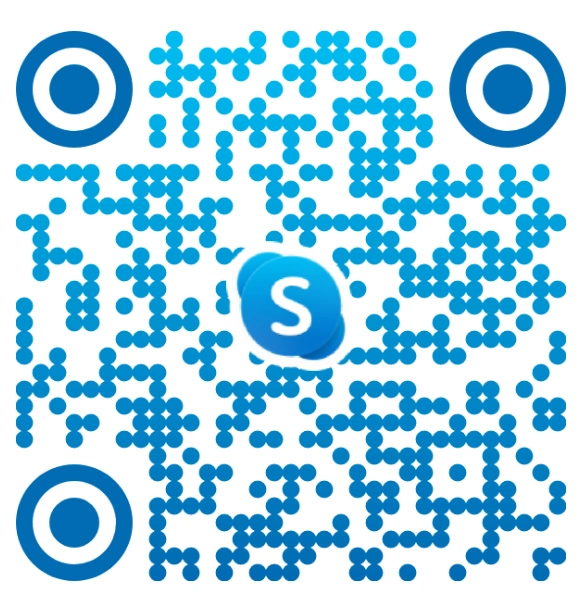Architecting AI Agent Development Frameworks: Principles, Tools, and Techniques
Introduction
Creating intelligent systems that operate on their own starts with the right development frameworks. These tools help AI agents perceive their environment, make decisions, and carry out tasks independently. By streamlining operations and reducing human intervention, businesses can significantly boost productivity and improve efficiency. A recent study even shows that 80% of businesses leveraging AI-driven solutions report enhanced operational efficiency.
Without a solid AI Agent Development Framework, building autonomous agents can quickly become chaotic. Frameworks provide structure, modularity, and standardization, making the development process smoother and more manageable. They integrate essential tools and help manage the entire agent lifecycle, ensuring scalability and effectiveness. Whether developing a customer support assistant or a multi-agent automation system, selecting the right framework is crucial for long-term success.
In this blog, we’ll explore the core principles of AI agent architecture, examine various types of AI agents, and discuss the key components of effective frameworks. We’ll also highlight popular tools, guide you in selecting the right framework, and address common challenges with real-world use cases.
Core Principles of AI Agent Architecture
Designing AI agents that are scalable, adaptable, and efficient begins with a strong foundation. This section explains the key principles that shape a solid AI Agent Development Framework, such as modularity, goal focus, flexibility, and scalability.
Modularity and Reusability
A modular framework allows developers to reuse core components such as perception modules, memory units, and reasoning engines. Testing, bug fixing, and implementing improvements in the future are all made easier by this, which speeds up development. Agent-based artificial intelligence development emphasizes this modular approach, making sure developers can quickly build intelligent automation with AI agents.Goal-Oriented Design
Every agent should be built around clear objectives. Whether the goal is predefined or dynamically assigned, the AI Agent Framework should support structured behavior that consistently aligns with the agent’s intended outcomes. This principle is crucial for AI Agent Architecture, enabling the creation of focused, efficient AI agents.Context Awareness and Adaptability
Real-time inputs must be interpreted by agents, who must then modify their behavior accordingly. A good framework supports memory, feedback mechanisms, and learning loops that allow the agent to evolve based on changing conditions or new information. This change is essential for developing LLM-powered autonomous agents capable of making real-time decisions and optimizing.Scalability and Maintainability
As agent systems grow, the framework should be able to handle increasing complexity without performance issues. Scalable architecture ensures that teams can expand projects with minimal restructuring, while maintainability keeps long-term development manageable. This is key for building AI-Powered Process Optimization and supporting dynamic AI agent workflows in larger, multi-agent systems.
By following these principles, developers create AI agents that are robust, intelligent, and built to scale effectively, laying the groundwork for powerful generative AI solutions across industries.
Types of AI Agents
AI agents come in different types based on their goals and task complexity. Every type has its own distinct function and is well-suited to particular scenarios. In this section, we’ll explore the four most common categories used in AI Agent Development today.
Reactive Agents
Reactive agents respond directly to their environment without relying on memory or internal models. They’re fast and efficient for simple, rule-based tasks like filtering spam emails or detecting motion in surveillance systems. However, they lack the ability to plan or learn from experience.Deliberative Agents
These agents use internal models of the world and logical reasoning to make decisions. They plan their actions based on predictions and outcomes, making them suitable for more complex tasks like strategic planning, process automation, or decision support systems.Hybrid Agents
Agents that are hybrids take the best features of reactive and deliberative systems and blend them. They can respond quickly when needed, while also using planning and reasoning capabilities. This blend makes them ideal for dynamic environments like autonomous vehicles or multi-agent systems frameworks.Learning Agents
Learning agents continuously improve their performance over time by interacting with data and adapting their strategies. They are often use machine learning techniques and are commonly found in recommendation systems, personal assistants, and intelligent analytics platforms.
Choosing the right type of agent depends on the complexity of your use case, the level of autonomy required, and how much adaptability the system needs over time.
Key Components of AI Agent Frameworks
The following essential components are included in every dependable framework for the construction of AI agents:
- Perception Modules: These allow agents to collect data from APIs, sensors, or user inputs.
- Reasoning Engines: Enable logical decision-making and pathfinding using algorithms or LLMs.
- Memory Structures: Short-term and long-term memory help agents remember context and learn from experience, supporting AI agent architecture and evolving intelligent automation with AI agents.
- Action Planning and Execution: The brain of the agent that selects and executes tasks, a critical element of AI-powered process optimization.
- Communication Interfaces: Used to connect with other agents or humans via chat, APIs, or external systems, often vital for multi-agent systems frameworks.
A flexible AI agent framework allows customization across each component.
Popular Tools & Frameworks for AI Agent Development
The world of AI agent development is rich with tools that help streamline the creation of intelligent systems. Below are some of the most popular AI agent development tools, each catering to different needs, from task automation to multi-agent orchestration.
| Framework | Language | Features | Best Use Case |
| Microsoft AutoGen | Python | Multi-agent orchestration, memory, UI | Enterprise automation |
| LangChain | Python | Toolchains for LLMs, memory, and agents | Data processing, assistant building |
| OpenAI GPT + Functions | Python | Dynamic function calling with LLMs | Dynamic tools, chat interfaces |
| Haystack Agents | Python | Focused on search-based agents | Retrieval-augmented generation (RAG) |
| CrewAI | Python | Multi-agent workflows, persona design | Role-based collaboration |
| AutoGPT | Python | Autonomous task loops using GPT | General-purpose automation |
| BabyAGI | Python | Iterative goal-based planning | Task prioritization and execution |
| AgentGPT | Web | Browser-based autonomous agents | Quick prototyping, demos |
| CAMEL, ReAct, Transformers | Python | Advanced research-focused libraries | Academic or experimental use cases |
| Ray AI | Python | Distributed computing, scalability, and machine learning integration | Large-scale AI agent deployment |
Let’s dive into each framework to get a clearer picture of what makes them unique and how they can benefit your AI agent development.
1. Microsoft AutoGen
Microsoft AutoGen is a robust framework designed to facilitate enterprise-level automation with multi-agent systems frameworks. It focuses on integrating memory, UI features, and the seamless orchestration of various tasks within complex workflows.
- Enables multi-agent orchestration for handling complex workflows.
- Integrates memory to allow agents to learn and improve from past interactions.
- Includes UI features to provide a more interactive experience with the agents.
- Designed to support enterprise automation and scalability.
- Great for streamlining business processes like customer service automation.
2. LangChain
LangChain is a powerful framework for building complex, data-driven AI applications. It allows developers to chain multiple language models together to handle intricate tasks, integrating memory and external APIs to create adaptive systems.
- Chain multiple LLMs to build more complex AI tasks.
- Offers built-in memory support to provide context in interactions.
- Easily integrates with external APIs to expand agent capabilities.
- Ideal for creating conversational agents and virtual assistants.
- Focuses on flexibility and adaptability, making it great for evolving tasks.
3. OpenAI GPT + Functions
OpenAI’s GPT, combined with its Functions framework, enables dynamic interactions between language models and external functions, allowing developers to create highly interactive and responsive agents.
- Facilitates dynamic API calls via GPT for real-time AI responses.
- Perfect for creating chat interfaces that respond intelligently.
- Seamlessly connects external tools and APIs into agent workflows.
- Designed for building conversational agents with a focus on interactivity.
- Great for automation where real-time decision-making is required.
4. Haystack Agents
Haystack Agents is a Python-based framework specifically designed for building search-based AI agents. It leverages Retrieval-Augmented Generation (RAG) to allow agents to retrieve and process external information for more informed responses.
- Uses Retrieval-Augmented Generation (RAG) for accurate information extraction.
- Ideal for creating question-answering agents that can search and respond intelligently.
- Leverages advanced NLP to ensure responses are contextually relevant.
- Focuses on improving information retrieval and search-based tasks.
- Highly customizable for enterprise-level search applications.
5. CrewAI
With CrewAI, developers can build cooperative multi-agent systems with defined roles and workflows. It is ideal for automating team-based processes and managing tasks where multiple agents with distinct roles interact to achieve common objectives.
- Supports multi-agent workflows, allowing agents to operate in distinct roles.
- Facilitates role-based collaboration, making it suitable for complex team tasks.
- Helps automate business processes where different agents collaborate.
- Simple to customize and adapt for specific business applications.
- Perfect for distributed task management and collaborative workflows.
6. AutoGPT
AutoGPT is an open-source framework that enables the creation of autonomous task agents. It allows agents to carry out continuous tasks without human intervention, making it useful for automating repetitive processes and general-purpose automation.
- Provides autonomous task loops for the continuous execution of tasks.
- Focuses on task automation that requires minimal human involvement.
- Great for automating repetitive business processes or workflows.
- Supports rapid prototyping of autonomous agents.
- Ideal for general-purpose automation across different industries.
7. BabyAGI
BabyAGI is a framework built around goal-based task prioritization. It supports iterative planning and task execution, allowing agents to continuously prioritize and execute tasks in an evolving environment.
- Focuses on iterative, goal-driven task planning and execution.
- Prioritizes tasks based on their urgency and importance.
- Features a feedback loop that allows agents to adjust actions dynamically.
- Ideal for environments where tasks change frequently.
- Simple to implement for straightforward task automation use cases.
8. AgentGPT
AgentGPT is a browser-based platform designed for quick prototyping of autonomous agents. It provides an easy-to-use interface for quickly creating, testing, and deploying agents, making it ideal for demos and quick experiments.
- Browser-based platform for rapid prototyping and testing.
- Simple interface for defining tasks and testing agent behavior.
- Great for creating proof-of-concept agents without heavy technical requirements.
- Ideal for showcasing agent capabilities in a demo environment.
- Enables fast experimentation and quick deployment.
9. CAMEL, ReAct, Hugging Face Transformers
This collection of frameworks includes CAMEL, ReAct, and Hugging Face Transformers, each offering unique capabilities for advanced research or experimental agent creation.
- CAMEL: Facilitates communication between agents for complex, multi-agent systems.
- ReAct: Focuses on reasoning and acting based on prompts, useful for experimental research.
- Hugging Face Transformers: Offers pre-trained NLP models for customizable agent development.
- Excellent for research and academic use cases.
- Suitable for testing new agent behaviors and enhancing AI models.
10. Ray AI
Ray AI is a distributed computing framework that simplifies the scaling of artificial intelligence models and tasks. Its ability to integrate with machine learning workflows makes it ideal for large-scale AI agent deployment and real-time collaboration.
- Supports distributed computing for seamless scaling.
- Integrates well with machine learning workflows, enhancing AI agent capabilities.
- Designed for large-scale applications, enabling real-time data processing.
- Optimized for high-performance environments with heavy computational tasks.
- Perfect for creating AI agents that require massive data processing and scaling.
Also Read : LangGraph vs AutoGen vs CrewAI: Choosing the Right Framework for Multi-Agent Workflows
Selecting the Ideal Framework and What You Should Consider
Selecting the right AI agent development framework is key to the success of your project. Consider these vital aspects to choose the best solution:
Use Case Fit
Choose a framework tailored to the specific needs of your project. Different frameworks excel in different areas, such as automation, data processing, or multi-agent systems frameworks.Integration Capabilities
Ensure the framework integrates well with essential tools, services, and platforms, enabling seamless collaboration across your tech stack without introducing compatibility issues or bottlenecks during development.Community & Documentation
A well-established framework with a strong community and clear, comprehensive documentation is invaluable. It can expedite problem-solving and help you navigate complex issues during development.Performance and Resource Efficiency
Opt for frameworks that provide efficient use of memory and processing resources. Efficient frameworks ensure smooth performance, even for large-scale AI agent deployment with numerous agents or complex tasks.Flexibility and Customization
Select a framework that offers flexibility, allowing for easy customization and adaptation as your project evolves. This ensures that the framework can grow and change with your needs.
By considering these factors, you’ll be well on your way to choosing a framework that best supports your AI agent development goals.
Techniques for Building Effective Agents
To develop reliable, intelligent agents, it’s important to use strategies that enhance their functionality, adaptability, and performance. Below are seven techniques that serve as the foundation for effective AI agent development:
Design Clear and Targeted Prompts
Use prompt engineering and instruction tuning to help agents understand tasks precisely. Well-structured inputs improve the accuracy and relevance of the agent’s responses, crucial for building effective AI agents.Enable External Tool Access
Enable agents to perform advanced tasks by connecting them to tools like APIs, browsers, and calculation engines through function calling. This greatly expands their problem-solving abilities, enhancing intelligent automation with AI Automation Services and AI agents.Build Agents That Work Together
Implement multi-agent coordination techniques where agents have assigned roles and coordinate their efforts. This approach helps manage complex tasks through teamwork and shared logic, perfect for multi-agent systems frameworks.Use Memory for Smarter Behavior
Integrate short- and long-term memory systems that allow agents to remember past actions, learn from outcomes, and refine behavior using feedback loops. This makes the agents more adaptable and intelligent over time.Train Agents for Specific Use Cases
Use data from a specific industry to improve agents, making them more accurate and aware of the context. Personalization helps adjust responses to a specific domain or user group, improving the agent’s flexibility and performance.Plan for Errors and Recovery
Create agents that can handle errors effectively. They should be able to recognize issues, adapt, and recover without breaking the workflow or user experience. This ensures strength in complex environments.
Also Read : Embedding Retrieval-Augmented Generation (RAG) in Agent-Orchestrated Systems
Common Challenges and How to Overcome Them
AI agent development brings many benefits, like saving time through automation, helping with better decisions, and making user interactions smoother. But it also comes with some challenges. In this section, we’ll look at the most common problems and share simple ways to solve them.
| Challenge | Solution |
| Ambiguity in Goals | Define tasks clearly using prompt templates and fallback mechanisms. |
| Agent Drift | Revalidate performance regularly and implement logic to restrict deviations. |
| Resource Overhead | Optimize API usage and implement batch processing to improve efficiency. |
| Maintaining Interpretability | Log decisions, actions, and reasoning to aid debugging and auditing. |
| Handling Multi-Agent Conflicts | Establish clear hierarchies or arbitration rules to resolve conflicts. |
| Scaling Communication in Multi-Agent Systems | Use message queues or shared memory protocols to reduce latency and data loss. |
Future Trends in AI Agent Architecture
AI agent design is changing quickly, driven by new trends. One key development is the rise of AgentOps, which helps developers manage, deploy, and track agents throughout their lifecycle. This trend is an important part of managing AI agent systems.
At the same time, Human-in-the-Loop Systems are becoming more common, allowing humans to step in when needed, which improves the automation of AI agents. Another important trend is the growth of self-improving agents that learn from feedback and rewards to get better over time, making them more independent.
There is also a push for standards that allow agents from different systems to work together more easily. This will make multi-agent systems more powerful and improve their coordination. These trends are shaping the future of intelligent automation and highlight the need for the right AI Agent Development Framework to ensure long-term success.
Why Choose Amplework for AI Agent Development
Amplework is a leading provider of AI agent development services, empowering businesses to automate tasks, enhance decision-making, and boost operational efficiency. Our expert team builds intelligent, scalable, and flexible AI solutions tailored to your unique requirements. From automation agents and personalized virtual assistants to advanced data analysis tools, we work closely with you to deliver AI systems that integrate seamlessly with your business operations.
What makes Amplework stand out is our commitment to giving high-quality and reliable AI solutions. We use the latest AI Agent Development Frameworks to ensure our agents are efficient, adaptable, and built to evolve with your business. With a focus on continuous improvement and easy integration, we ensure your AI agents remain up-to-date and ready to tackle any business challenges. Choose Amplework to unlock the power of AI and enhance your processes, making them faster, smarter, and more efficient.
Final Words
In conclusion, AI Agent Development Frameworks are essential for building intelligent, focused systems that ease development. Key principles such as structure, scalability, and goal alignment ensure the creation of robust and adaptable architectures. The choice of framework—whether it’s LangChain, AutoGen, or another—should be aligned with specific project needs and use cases. As AI agents continue to evolve, their applications will expand, from automation to unique assistance and data analysis. Looking ahead, trends like AgentOps and self-improving agents will drive further innovation in the field, shaping the future of intelligent automation.
Frequently Asked Questions (FAQs)
What are the key principles for architecting AI agent frameworks?
Focus on growth potential, flexibility, easy changes, data protection, and smooth connection with current systems. The design should allow for ongoing learning and adaptability.
What tools are essential for AI agent development?
Key tools include TensorFlow, PyTorch, OpenAI API, and frameworks like Rasa for natural language processing, along with cloud platforms for deployment.
How can AI agents be integrated into existing systems?
Use APIs, microservices, and middleware to make sure seamless communication. APIs allow integration with other software, while microservices enhance modularity and scalability.
What are the common challenges in AI agent architecture?
Challenges include handling large datasets, providing real-time processing, maintaining performance with increased scale, and performing robust security and compliance.
How do you ensure scalability in AI agent frameworks?
Implement distributed computing and cloud-native data solutions to ensure scalable and efficient operations. Modular architecture, load balancing, and automated scaling are also critical for optimal performance.
What are the best techniques for improving AI agent performance?
Techniques like reinforcement learning, optimization algorithms, and model pruning help enhance performance. Continuous training and fine-tuning on updated data are also important.
How do AI agents handle decision-making processes?
AI agents use algorithms like decision trees, neural networks, or reinforcement learning to make real-time decisions based on inputs, objectives, and learned behaviors.
How do you ensure data security in AI agent development?
Implement encryption, access controls, and secure APIs. Regular audits, compliance with standards like GDPR, and ensuring data anonymization help safeguard sensitive information.
How can AI agent frameworks adapt to changing data?
Use adaptive learning models that update based on new data. Reinforcement learning techniques allow agents to continuously improve and adjust based on evolving inputs.
What role does AI ethics play in agent development?
Ethical considerations are crucial. Ensuring transparency, fairness, accountability, and privacy in decision-making processes is vital for maintaining trust and compliance.


 sales@amplework.com
sales@amplework.com
 (+91) 9636-962-228
(+91) 9636-962-228





